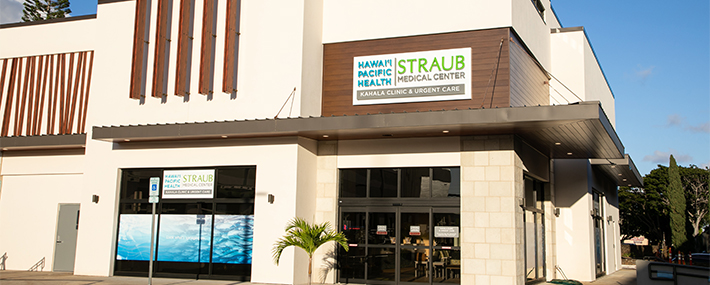Comprehending the Role of Urgent Care in Providing Timely Treatment for Non-Life-Threatening Problems
Immediate care facilities have arised as an important part of the healthcare landscape, resolving the instant demands of clients with non-life-threatening problems. Comprehending the subtleties of urgent care can considerably influence client end results and the overall performance of healthcare shipment.
What Is Urgent Treatment?
Urgent treatment describes a category of clinical solutions designed to attend to non-life-threatening problems that require instant focus. These facilities work as an intermediary in between medical care doctors and emergency situation rooms, offering a hassle-free alternative for individuals who need punctual treatment without the extensive waiting times commonly associated with emergency departments.
Immediate treatment facilities are typically staffed by medical experts, consisting of medical professionals, registered nurse practitioners, and physician assistants, who are trained to identify and treat a large variety of problems. Usual solutions given by these centers include therapy for small injuries, illnesses, and infections, as well as diagnostic tests such as X-rays and laboratory work.
In addition, urgent care facilities frequently accept walk-in people, getting rid of the need for visits. In general, immediate care plays an essential role in the health care system, ensuring clients can access crucial medical services without delay and efficiently.

When to seek treatment at an urgent treatment center rather of a primary treatment physician or an emergency space,Many people might discover themselves uncertain concerning. Urgent treatment is designed to resolve non-life-threatening conditions that call for prompt interest but are not serious adequate to require an emergency situation space browse through.
Normally, one need to think about immediate look after problems such as small fractures, sprains, cuts calling for stitches, or infections like urinary tract infections. In addition, cold or flu signs and symptoms, rashes, and allergic responses can additionally be appropriately handled in this setup.
It is necessary to note that immediate treatment is not suitable for lethal emergency situations, such as chest pain, problem breathing, or extreme blood loss, which necessitate instant emergency clinic treatment.
People that do not have access to a main care physician or can not protect a timely consultation may additionally gain from immediate treatment solutions. Inevitably, comprehending when to use immediate treatment can cause extra reliable healthcare delivery, allowing patients to receive the suitable level of care based on their particular health and wellness requirements.
Benefits of Urgent Care Centers
Choosing urgent care centers for non-life-threatening problems offers several advantages that enhance patient experience and ease of access. One main benefit is the reduced wait times contrasted to typical emergency situation spaces. Immediate treatment centers commonly operate a first-come, first-served basis, permitting individuals to get timely clinical focus without the lengthy delays frequently associated with medical facility settings.
In addition, immediate care facilities give prolonged hours, including weekend breaks and evenings, suiting individuals with varying schedules. This adaptability makes sure that individuals can look for care when it is most convenient for them, better advertising timely treatment.

Furthermore, these facilities often offer a thorough array of services, including small procedures and analysis examinations, all under one roofing. This combination of services not just enhances the individual experience however additionally fosters a more cohesive method to taking care of non-life-threatening wellness problems, eventually benefiting total client outcomes.
Common Problems Dealt With
At urgent treatment centers, a range of non-life-threatening conditions can be successfully treated, offering clients with prompt and accessible medical aid. These facilities are especially experienced at dealing with concerns that require prompt interest yet do not position an instant threat to life or limb.
Common problems dealt with at immediate treatment centers include small injuries such as sprains, fractures, and pressures. Furthermore, they take care of illnesses like colds, flu, and infections, including urinary tract infections and sinusitis. Skin problem, varying from breakouts to insect attacks, are additionally regularly addressed. Urgent care centers are geared up to do needed analysis examinations, such as X-rays and research laboratory examinations, allowing them to give thorough care.
In check these guys out addition, immediate care carriers can carry out inoculations, assisting to avoid the spread of infectious conditions - Urgent Care. They additionally use services for small treatments, such as suturing wounds or draining abscesses. By supplying these diverse services, immediate care facilities play a crucial function in connecting the void between health care and emergency solutions, making sure clients receive prompt treatment for a wide variety of conditions without the demand for long delay times commonly connected with emergency spaces
How Urgent Treatment Supports Healthcare System
Immediate care facilities play an important duty in supporting the total health care system by alleviating the problem on emergency situation departments and giving timely accessibility he said to healthcare for non-life-threatening problems. By dealing with instances such as minor injuries, infections, and health problems, immediate care centers permit emergency divisions to concentrate on more critical clients calling for immediate interest.
Moreover, urgent treatment facilities enhance health care access, offering prolonged hours and an easier alternative to standard medical care settings. This accessibility is particularly valuable for clients that might not have a regular physician or who require prompt therapy beyond typical workplace hours. Because of this, urgent care centers efficiently decrease boost and wait times person check my blog complete satisfaction.
Furthermore, urgent care facilities add to cost savings for both individuals and the health care system by supplying lower-cost services contrasted to emergency divisions. This financial effectiveness is important in an age of increasing medical care costs, enabling clients to get required care without incurring inflated costs.
Final Thought
To conclude, urgent care centers play an important role in the healthcare system by delivering punctual therapy for non-life-threatening conditions. By bridging the void in between medical care and emergency situation areas, these centers guarantee that clients receive prompt medical attention without the extensive delay times usually connected with emergency divisions. The access and effectiveness of urgent treatment centers contribute dramatically to easing the general burden on medical care resources, enhancing individual results, and advertising a much more effective medical care delivery system.
Immediate care facilities have arised as an important component of the health care landscape, dealing with the prompt needs of people with non-life-threatening conditions. Immediate care visits normally incur lower out-of-pocket expenditures compared to emergency situation department brows through, making care extra inexpensive for people without jeopardizing top quality. Urgent treatment centers are furnished to perform needed diagnostic examinations, such as X-rays and lab examinations, enabling them to give detailed treatment.
By offering these varied services, immediate care facilities play a vital function in linking the gap in between key care and emergency solutions, guaranteeing people obtain timely treatment for a vast range of problems without the need for long wait times commonly connected with emergency situation areas.
Moreover, urgent care facilities boost medical care ease of access, using extensive hours and an extra convenient alternative to traditional key care setups.